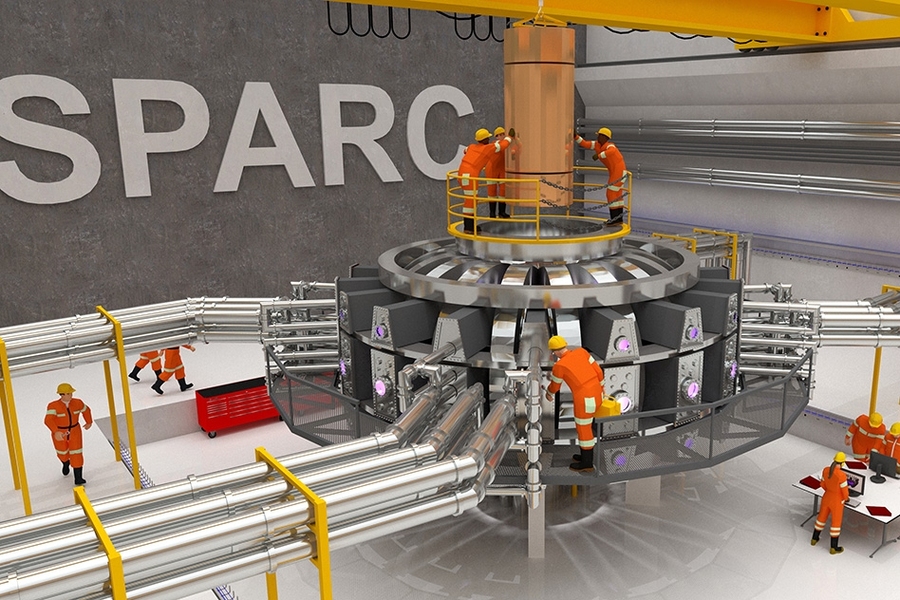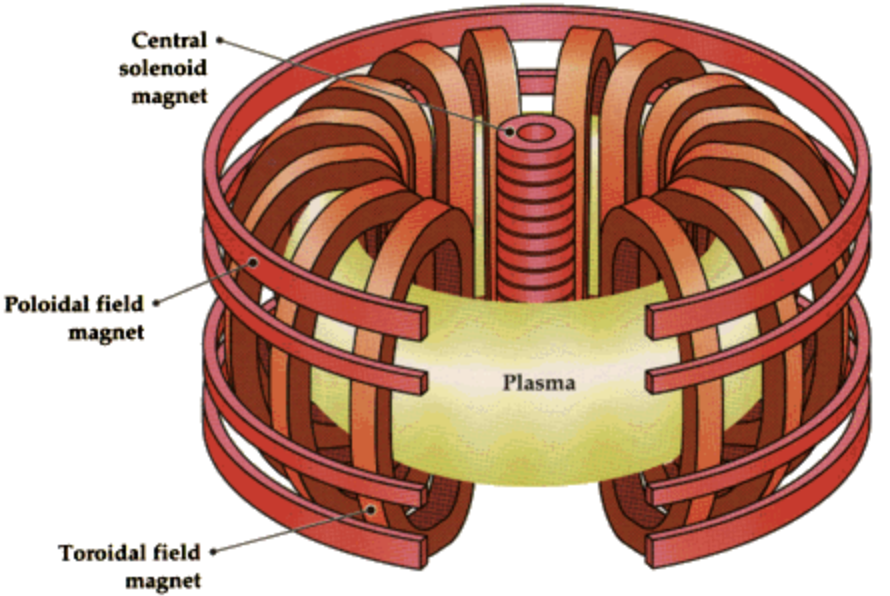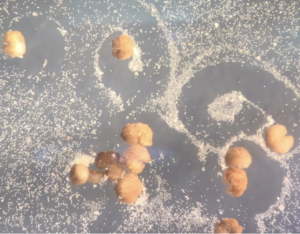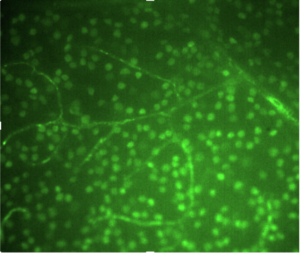A revolutionary method of harnessing nuclear fusion could solve the world’s energy problem
The Sun, the Solar System’s ultimate source of energy, generates its power through violent, repulsion-defying, and immensely productive nuclear fusion reactions (1). The Sun’s colossal mass results in a strong gravitational force, which, along with a high temperature of fifteen million kelvin, creates the extreme conditions necessary to sustain the Sun’s plasma, a highly conductive heated gas made up of charged particles (2). In the plasma, hydrogen atoms can overcome their electrostatic repulsion and slam together to produce helium atoms, releasing massive amounts of energy in a process known as nuclear fusion (3).
The Earth’s primary source of energy is not only much less efficient than the Sun’s but highly damaging to its natural environment. Fossil fuels, which account for 80 percent of Earth’s energy generation, release greenhouse gasses that trap heat and contribute to global warming (7). On the other hand, the general public is hesitant to embrace nuclear fission as an energy source, despite its efficacy, because of safety concerns (10). And while renewables are less dangerous and destructive of the atmosphere, relying on them solely is not feasible, leaving the Earth in dire need of a revolutionary method of harnessing energy (8).
Commonwealth Fusion Systems (CFS), a company headquartered in Cambridge, Massachusetts, in collaboration with scientists at MIT, have set their sights on an ambitious initiative to save the planet: replicating the conditions of the sun that allow for nuclear fusion in a power plant on Earth (4). Essentially, they seek to capture the Sun in a bottle.
CFS has designed the Affordable, Robust, Compact (ARC) fusion reactor, which will be the world’s first commercially viable fusion power plant (9). As nuclear fusion does not produce any of the nuclear waste that nuclear fission does, the CFS power plant will produce completely clean energy. CFS’ successful experiment this past September with a prototype of their design for the ARC power plant sparks hope that the Earth, like the Sun, can harness this carbon-free, readily available, and inexhaustible source of energy to neutralize the threat of climate change (4).

At first, Earth appears to be a hopeless case for sustaining nuclear fusion reactions. The same high temperatures that spur nuclear reactions on the Sun can wipe out solids on Earth, making it difficult to contain the reaction (5). The innovation necessary to capture fusion energy was a method of suspending plasma in a way that would keep it from coming into contact with solids (4).
Scientists seeking to harness nuclear fusion reactions have long wondered about magnetic confinement, a strategy for confining plasma. Because plasma is made up of charged particles, magnetic fields are very effective in influencing it (4). Tokamaks, or donut-shaped enclosures first developed during the 1960s in the Soviet Union, are a critical part of magnetic confinement (6).
Tokamak chambers are able to confine plasma and control it through magnetic fields (6). Once scientists inject plasma into a tokamak’s chamber, the particles adopt helical trajectories, which prevent them from crashing into the walls of the chamber (6). An electric current then flows through a central solenoid, a type of superconductor, which causes ions and electrons to collide (6). To increase the temperature of the chamber, scientists irradiate the chamber with electromagnetic waves and bombard it with high energy deuterium ions (2H) (6). Thus, a tokamak seals a high temperature environment with a magnetic field, and mimics the conditions of the Sun which allow for nuclear fusion.

Until CFS’s breakthrough, most tokamaks used low temperature superconductors, which failed to yield strong magnetic fields and required that the tokamak be enormous (4). CFS’s creation of a high energy superconductor generated a much stronger current in the tokamak, and as a result, meant that the tokamak could be forty times smaller (9). The idea for such a tokmak first originated in the classroom of Denis Whyte, director of the MIT Plasma Science and Fusion Center. It later became the CFS design concept for ARC. CFS says it will produce a net power output, making it a highly efficient and environmentally compatible energy plant. (4)
This fall, in the first of a series of tests of the concept, CFS powered a tokamak magnet composed of sixteen stacked plates up to a magnetic field of 20 tesla (a unit that measures magnetic flux density) (4). This was the highest field strength ever recorded for a magnet of its kind, making it the strongest superconductor in the world (9).
The next step for CFS will be to build a plant half the size of the ARC plant (4). This will be another test that will help CFS cement its manufacturing process and design before it goes on to build ARC (4).
The implications of CFS’ work are monumental. If CFS can build ARC, the fusion reactor will be an important step in proving mass production of fusion power pragmatic and commercially viable. Then, as a carbon-free, completely safe and inexhaustible source of energy, nuclear fusion could very well supplant fossil fuels as Earth’s primary energy source and power the planet for perpetuity.
Bibliography:
- (2022). About Plasmas and Fusion. Princeton Plasma Physics Laboratory. Retrieved from https://www.pppl.gov/about/about-plasmas-and-fusion
- (2018, Jan 5). Sun 101. National Geographic. Retrieved from https://www.youtube.com/watch?v=2HoTK_Gqi2Q&t=235s.
- (2022). Capturing the Energy. ITER. https://www.iter.org/sci/MakingitWork
- Chandler, David. (2021, Sept 8). MIT-Designed Project Achieves Major Advance Toward Fusion Energy. MIT News Office. Retrieved from https://news.mit.edu/2021/MIT-CFS-major-advance-toward-fusion-energy-0908.
- (2021, August). Nuclear Fusion Power. World Nuclear Association. https://world-nuclear.org/information-library/current-and-future-generation/nuclear-fusion-power.aspx
- (2021, Mar 19). Magnetic Confinement Fusion. Youtube. Retrieved from https://www.youtube.com/watch?v=naEz0rHvF2U
- Herring, David. (2020, Oct 29). What harm will global warming cause? Climate.gov.Retrieved from https://www.climate.gov/news-features/climate-qa/what-harm-will-global-warming-cause
- Massachusetts Institute of Technology. (2021, Sept 8). A Star in a Bottle. Youtube. Retrieved from https://www.youtube.com/watch?v=WdoI1X5m96s&t=37s
- (2021). Design and building nuclear fusion systems to power the world. Commonwealth Fusion Systems. Retrieved from https://cfs.energy
- (2019, February 7) Rep. Alexandria Ocasio-Cortez Releases Green New Deal Outline. NPR. Retrieved from https://www.npr.org/2019/02/07/691997301/rep-alexandria-ocasio-cortez-releases-green-new-deal-outline






Comments are closed.